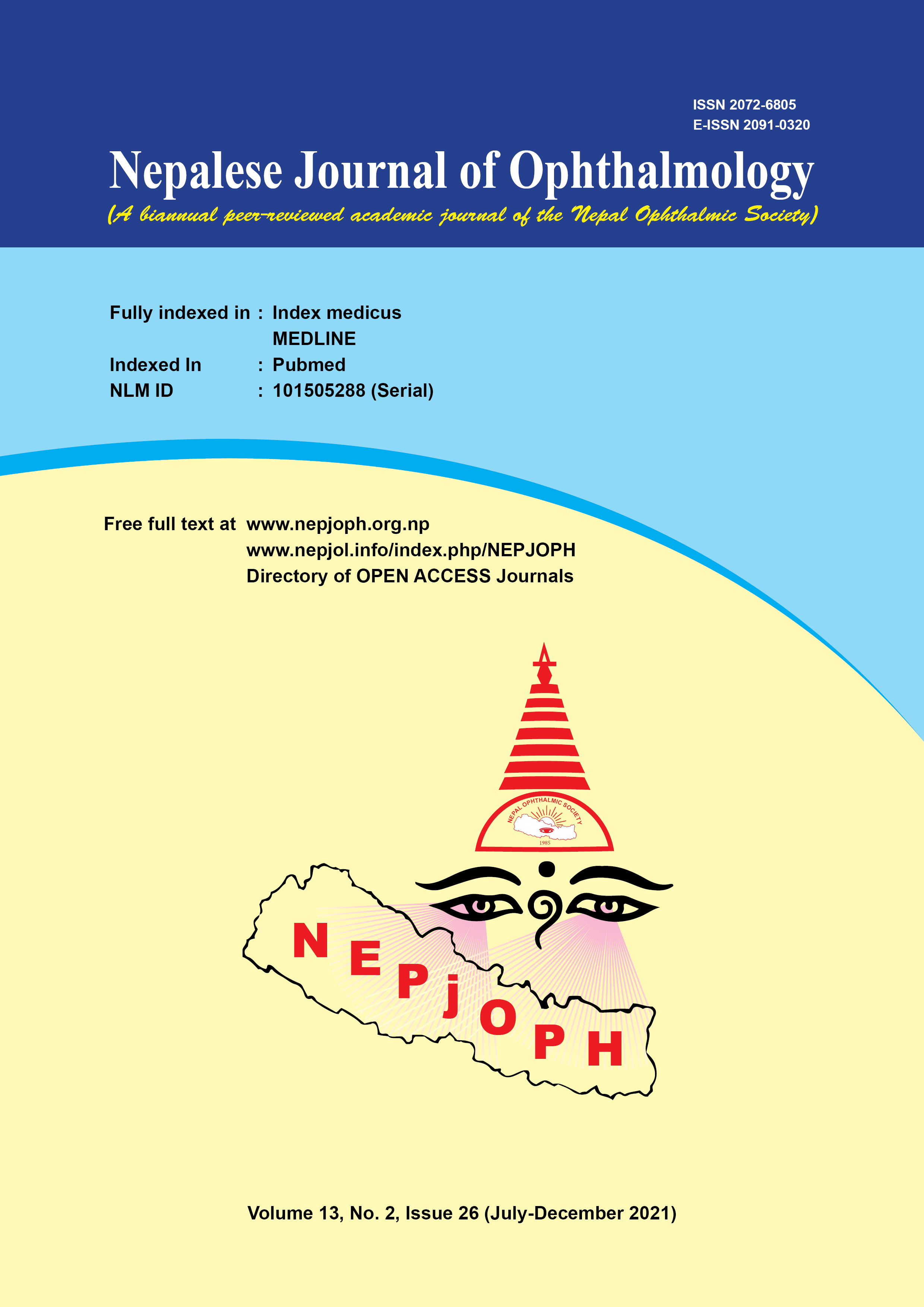Comparison of Intraocular Pressure among Individuals with Systemic Hypertension and those with Normal Blood Pressure
DOI:
https://doi.org/10.3126/nepjoph.v13i2.33917Keywords:
Eye, Hypertension, Intraocular pressure, Ocular hypertensionAbstract
Introduction: Systemic blood pressure, by far, is one of the most important factors that can have an effect on intraocular pressure. We have compared the intraocular pressure (IOP) among patients with systemic hypertension and those with normal blood pressure.
Materials and methods: A hospital based case control study was conducted from March 2017 to March 2018 in the Ophthalmology outpatient department at Dhulikhel Hospital. A total of 100 patients with hypertension were included in the case group (hypertensive group) and 100 cases with no systemic or ocular disease were included in the control group (normotensive group). Mean intraocular pressures were calculated and compared between the two groups.
Results: Mean age of patients was 49.03 years in hypertensive group and 47.53 years in normotensive group. Mean IOP of the right eye in those with hypertension was 16.10 mmHg and in the left eye was 15.8 mmHg. Similarly mean IOP of the right eye in the normotensive group was 15.8 mmHg and the left eye was 16.2 mmHg. The difference between mean IOP of hypertensive and normotensive individuals was not statistically significant (p > 0.05). The prevalence of ocular hypertension was found to be 7.5%.
Conclusion: There was no statistically significant difference in IOP between hypertensive and normotensive individuals. However, a statistically significant difference in IOP was noted between ‘hypertensive with controlled blood pressure’ and ‘hypertensive with uncontrolled BP’ indicating that high blood pressure may be associated with high IOP.
Downloads
Downloads
Published
How to Cite
Issue
Section
License
Copyright (c) 2021 Nepalese Journal of Ophthalmology

This work is licensed under a Creative Commons Attribution-NonCommercial-NoDerivatives 4.0 International License.
This license enables reusers to copy and distribute the material in any medium or format in unadapted form only, for noncommercial purposes only, and only so long as attribution is given to the creator.




